
A Conceptual Interview with Jason Savage
Renaissance Man – Artist – Designer – Preservationist
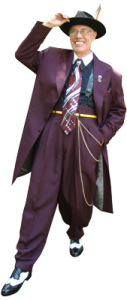 What is your pseudonym?
What is your pseudonym?
Jason Savage
Where are you from? (Provide a little bit of your background, have you moved etc).
I’m going to say Charleston, South Carolina, the same city where Beeple resides. But that answer requires a little background information.
I was born in Elizabeth City, North Carolina. Our family moved four or five times before we ended up in Charleston in 1957. In 1997, I moved to Raleigh, North Carolina to work with the world renowned tiger expert and preservationist Dr. Michael Bleyman.
Even though I’ve lived in Raleigh for the past 26 years, I still call Charleston my home because I did most of my growing up there. The city, its location and the people I grew up with molded my path.
Can you tell us about your background and what lead you down the path to becoming an artist and ultimately experimenting with NFTs?
I consider myself a Renaissance Man who wears many hats, one of those being a cryptographer; another being graphic artist.
I attended the University of Arizona on a music scholarship playing the Oboe and English Horn in the symphony and saxophone in the marching band. I also play stringed instruments like the guitar, banjo, mandolin etc.
After I graduated in 1972, I moved back to Charleston and taught music for several years. I formed a five piece cover band with all five of us singing. It was a really good band. But we had a few conflicts and ultimately broke up. I did a duet with the young lady in the group for several years.
After that I apprenticed a cabinet maker and began learning the carpentry trade. I met a like-minded individual who wanted to work with me, so we did some jobs together. But I moved on to my next love – tennis. I taught at a racquet club for several years. That was one of the most rewarding times of my life.
I left tennis behind and apprenticed a marine construction expert. I learned how to build docks, seawalls and revetments. I left that company and started my own dock building enterprise with one of the members of my old band. I sold my share of the company to him several years later. He built it into a large and successful venture.
I got back together with my carpentry friend, Barry Ross, and we began renovating historic Charleston homes. We were both perfectionists, so we were in great demand. I worked with Barry, on and off, for fifteen years.
After leaving the tennis phase, the girl I was living with at the time got me interested in running. I played soccer in college, so how hard could simply running be. I was living on Folly Beach, SC at the time. A running club was putting on a 2-mile race, so I decided to enter. By the time I got to the first mile I thought I was going to die. I realized that one needed a serious amount of training to be any good at this sport.
I put in the training and became a national class age group runner. I ultimately got ranked in the top ten master’s runners in South Carolina. My running career lasted for almost 35 years. I have a little more on that later.
During all those years, I still made time to pursue my linear graphic design work. That has been consistent from 1972 until today. For the complete fifty-year history of my design saga, please visit my website.
When did you mint your first NFT?
I was invited to be a creator on MakersPlace, a curated marketplace. At the time of this interview, 2023, I have minted ten of my Trithemian Web™ cryptograms. I am the only cryptographer producing linear graphic, applied art cryptograms, making my work unequivocally rare.
Can you tell us one thing you cannot live without? (and why)
I cannot live without a cat at my side. I’ve worked with the big cats and had domestic kitties all my life. Each one was special and unforgettable. Being with a cat is a great comfort for me.
Who is your favorite artist(s) (Non NFT)? What about their style resonates with you.
I would have to say the old masters in general. When I toured Europe, I got to see a lot of breathtaking art. Two of my favorites are Claude Monet and Salvador Dalí. I was able to visit Dali’s museum in Figueres, Spain. Marvelous!
Who is your favorite NFT artist? What makes this artist unique?
I have to remind everyone that I’m 75 years old as of June 2024. I first learned about NFT’s when I read an article featuring Beeple and his Christie’s sale. To be honest, I don’t have a favorite NFT artist. Beeple’s commentary through his graphic art is unmistakable. He has proven his dedication to his trade. So, I will have to say he would be one of my favorites.
What made you pursue NFT art?
I’ve been pursuing my design work since 1972. When I first went from pencil and paper to a computer, the most unsettling issue was how to offer an original that was designed with the aid of a computer. Back in the day, some curators were saying the artist would have to paint over sixty percent of a computer print to be able to call it an original. I could not honor that due to the type of work I do. This necessity was later modified, but the issue was never really settled.
NFT’s changed all that with the introduction of smart contracts and the blockchain. I am not pursuing NFT art per se. I am doing my work as I always have, but I am now able to incorporate a smart contract through a marketplace to authenticate it.
What is the one NFT you wish you had purchased but missed out on?
Politics Is Bullshit, one of Beeple’s first drops.
If you could travel anywhere in the world, where would you go? Why this location?
Since I’ve worked with tigers, I would love to visit Ranthambore National Park, a vast wildlife reserve near the town of Sawai Madhopur in Rajasthan, northern India. Its home to tigers, leopards and marsh crocodiles. Landmarks include the 10th-century Ranthambore Fort, a site where tigers once frequently roamed. I doubt if you would see a tiger at the fort today due to their limited population. It would be deeply fulfilling to actually see a tiger in the wild. That is still possible, but it would be a costly and time-consuming venture. You can find a link to the Zoë Foundation, my tiger initiative, as well as my other endeavors on my website.
What are your other passions besides art? Why?
Why? Because there are a lot of things besides art. I invite you to read my CV on my website.
One of my passions is working with tigers. I’ll never forget the day I held my first baby tiger. The International Union for Conservation of Nature (IUCN) lists them as critically endangered. Mankind must do everything possible to save them along with other animals on the list. I had the great privilege to work with Dr. Michael Bleyman, a world-renowned tiger expert, and his tigers at his facility in Pittsboro, NC. On one occasion Michael introduced me to three, full grown tigers. What an experience. Unfortunately, he passed away in 1996 at the age of 58 due to cancer. That was a great loss to me and the preservation effort.
Another passion, and some would say obsession, was running – specifically road racing. I competed for close to 35 years. I was ranked as one of the top ten masters runners in South Carolina. I was still running sub five minute miles when in my 40’s. I’ve run the New York City Marathon once and the Boston Marathon twice. I qualified for Boston in a 2:49:34. I actually was the overall winner in two 5K events when I was 59. I won the North Carolina State Senior Games 5K in 2006 which sent me to the National Senior Olympics in Louisville, Kentucky where I placed 4th in the 55-59 age group. Several years after that I came down with what the doctor’s say is chronic tendonitis in my left Achilles. The closest I get to running today is power walking. At least that keeps me active.
My lifetime passion is domestic cats. I live with only one these days, my Chausie cat Zeus. He was born on my birthday under my bed in 2010. That’s a story in itself. And I must mention Zoë, a bi-color, black & white, full rumpy Manx whose illustration became the logo for my tiger foundation. She was special and I miss her. I still carry her photo in my wallet. I relate her story in my auto biography.
Do you make other forms of art?
Yes, I do. For one, I design simulated puzzles that I call Precious Memories™. These are not actual puzzles. They are prints featuring dedications to individuals (tributes), cities, events or history. In some cases, I incorporate blended, hand drawn Gothic style lettering within the piece itself. It’s a message to an inquisitive viewer that discovers there is more to the piece than the featured images.
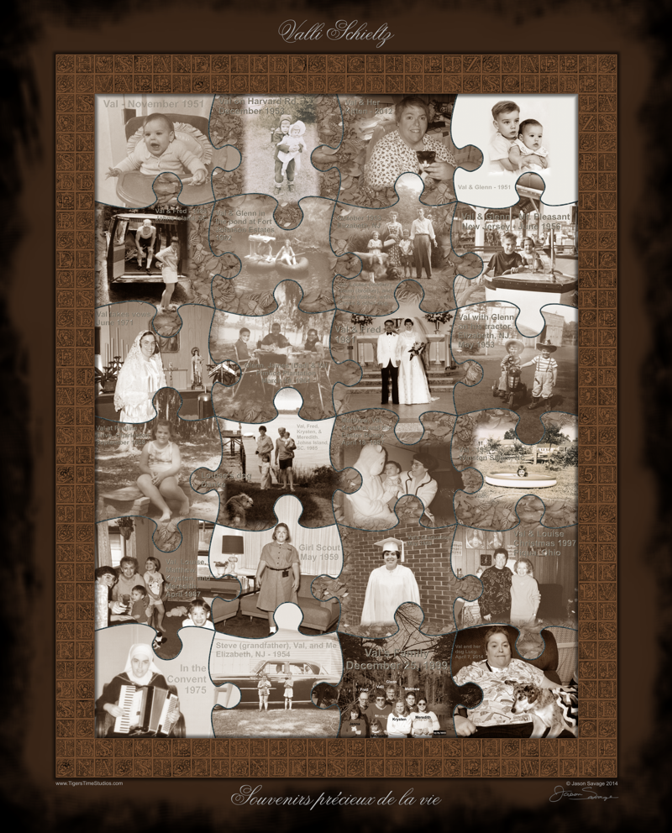
Another endeavor features high resolution etching on black surgical stainless steel. I have a small lab in my home where, over several years, I perfected the process. I call my pieces Immortal Memories™. It’s estimated that these plaques could survive the outdoor elements for thousands of years. This effort came about when I was working with award winning sculptor and chemist, Carl Regutti. He asked me if I would help him with a metal etching technique. And so it went. We proceeded to design the Freedom Reigns Memorial, an enduring tribute to the men and women who paid the ultimate price in the war of terrorism. We pursued this etching technique to use on the memorial. Lack of interest by the mainstream public and the death of Mr. Regutti stalled the project. I could write a book on this effort.
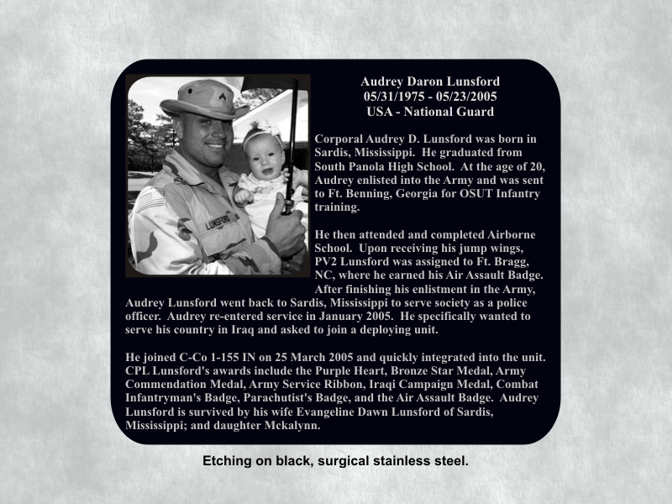
Are you self-taught or trained?
I am self-taught. I began drawing rockets when I was a little kid. My mom even sent one of my drawings to the White House. I began working with linear graphics in 1972. Back in those days it was pencil and paper. I graduated to the computer in 1989. Do you remember DOS? I began website design in 1994, which I still do today for my personal sites.
How did you come up with your specific style?
Back to 1972, I participated in a bar challenge. A guy challenged me to read a verse on a small square of paper. If I could read it, he would buy me a drink. If I couldn’t, I would have to buy him a drink. Whatever was written on that paper looked like a spider’s web. I couldn’t read a thing, so I bought him a drink. He then showed me how to read the verse. I was floored. You had to hold the paper horizontally to read elongated letters. I was hooked. I had to do something more with this revelation. That’s how I got into art. That was long before NFT’s and computer graphics programs.
How has your style evolved over the years?
My initial venture into elaborating on the bar challenge’s linear graphics was to incorporate them into a resin sculpture. In 1979 I designed a piece that would be debuted at the Spoleto Festival USA, one of the largest art festivals in the world. My resin sculpture would be displayed in the Gaillard Municipal Auditorium and outdoors at the festival’s finale.
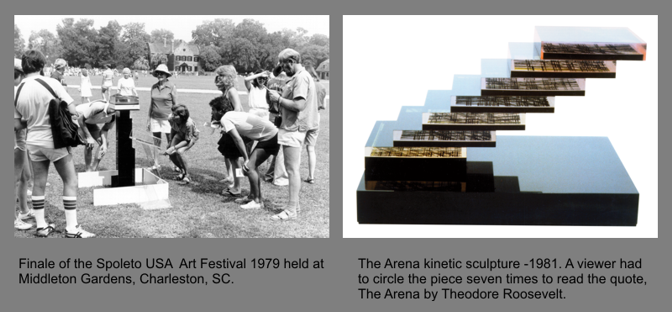
I stopped making these sculptures several years later. The resin’s methyl ethyl ketone was affecting my health. I had to change my approach. I went back to pencil and paper and later the computer. I began experimenting with larger and larger designs, color variations, the incorporation of images and different substrates. I ultimately coined a new art movement – Linear Transmutation.
My work evolved into applied art. “The difference between applied art and fine art is one of ultimate purpose. Fine art is produced simply for aesthetic purposes, where the end result is found visually appealing to the viewer. Applied art is also aesthetic, but with an interactive design or a problem-solving goal that is part of a greater purpose.” My work incorporates an interactive design as well as a problem-solving goal. That goal would be to solve the cryptogram and unveil the other hidden elements, if there are any in a particular piece. That information is contained in the cryptogram’s documentation.
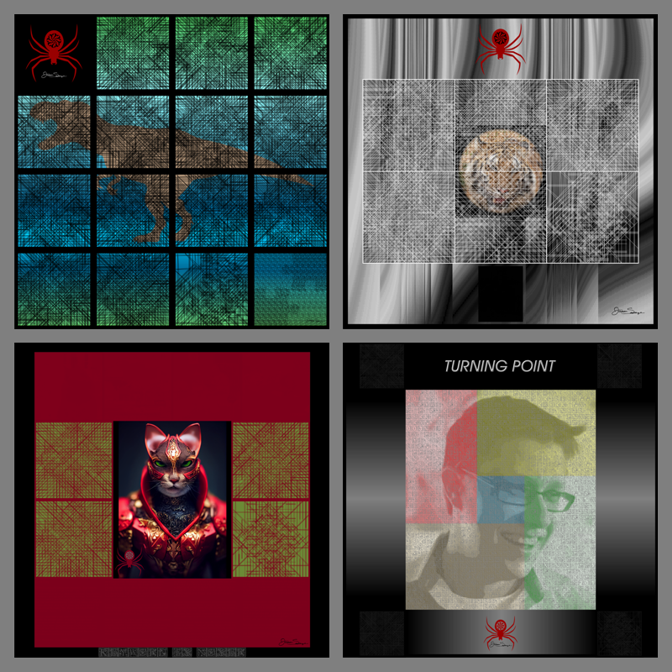
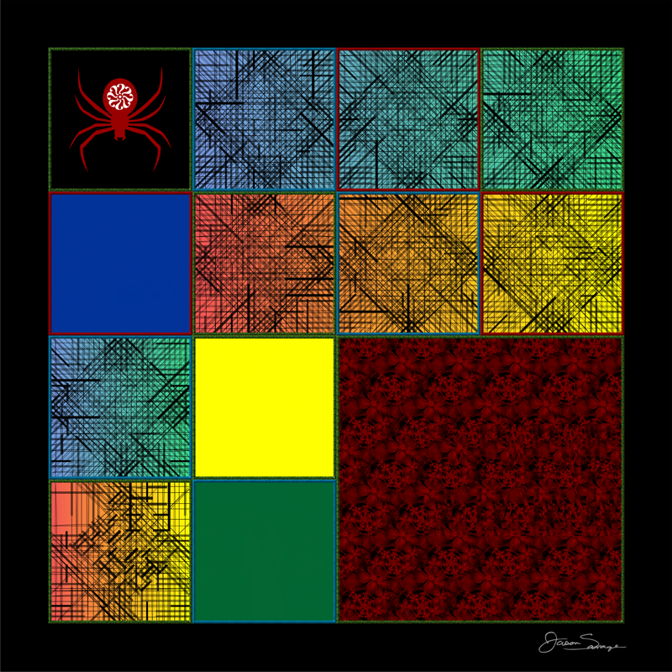
What is coming in the near future?
I hope more cryptograms.
I read that you coined a new art movement. Can you elaborate?
I feel that my work is so unique that it deserves its own movement or style. I did quite a bit of research on art movements. Many were coined by art critics, but some were named by writers, historians, poets and even artists themselves.
Most of these movements had more than one artist participating at the time. In my case, I’m the only participant at present. I call my style Linear Transmutation: The metamorphosis of specifically defined linear graphics into a traditional substitution cipher delivered through a digital or traditional medium.
I decided to name the movement because I wanted an accurate definition of what my style represents. I have more on this subject on my website.
If you could collaborate with one artist who would it be? (and why)
The one I am most familiar with is Beeple. He has developed a distinctive style over the years. A collaboration would be quite interesting.
What was your greatest failure and what did you learn from that?
This is a great question. The bar challenge I discussed was a small piece of paper that could easily be held up and read on a horizontal plane. When I stopped making resin sculptures I went back to graphics on paper. I began designing larger and larger pieces. That began a 35-year nightmare. I wouldn’t call it a failure, but it was a major setback.
These large pieces had to be taken off the wall and placed on a horizontal surface so the linear lettering could be read. And if the piece was framed with glass, you couldn’t read it due to the reflection. What a dilemma.
I spent a good deal of time in New York City in the mid 80’s consulting with all kinds of folks – artists, PR, marketing, artist agents, etc. I asked everyone I met if they could offer a solution to this problem. Nobody could. One year I few up to NYC for one day just to meet the marketing guru who introduced Trivial Pursuit into the US from Canada. He liked my work but said I had a problem – the size. No one was going to remove it from the wall to try and read it. Very observant. Dead end there as well.
I kept experimenting and morphing my work into different configurations for the next three plus decades. I left my infatuation with linear graphics behind. I never offered a linear graphics work for sale due to the size/reading issue. No one, in all those years, could offer a solution. In 2020, I had an epiphany. Problem solved. I could return to my original concept and begin producing my linear graphic designs. If you would like to discover that solution, click ‘My Story’ on my website.
Since I had not built up a body of work over the years, I had to begin designing pieces that I could now offer to collectors. To date I have completed eleven new Trithemian Web™ cryptograms. I learned that solutions can come in very dramatic ways.
Do you have any upcoming drops?
I am not concentrating on a drop at the moment. I need to mint my collection and then decide how to most effectively market my work. I’ve learned that getting a drop promoted on some major marketplaces is controlled by influencers. I’ve attempted to reach some of the NFT influencers with no success. It was worth a try.
Just listing a collection on a marketplace without having some collateral advertising or promotion will get a designer nowhere unless they’re already famous which means they probably have a substantial social media following to drive their marketing. Beeple for instance. Honestly, marketing my work as an unknown present hurdles that will demand some attention.
What are your thoughts on generative art?
The AI programs offer interesting options for prompters. I hesitate to call them artists because they don’t create anything, the AI bots do that. These bots can produce some beautiful work given the right prompts. I’ve experimented with Midjourney. Using these bots can be quite addictive.
The downside for traditional artists is the overload of the market with this AI generated ‘art’. Down the road I can envision the AI bots producing their own designs without the need for prompters. Generative art will make it harder and harder for traditional artists to break through. The marketplace has become a giant big-box store. Unless you’re backed by a notable influencer, written about by a journalist knowledgeable in the NFT world, or you can afford to pay a PR firm that specializes in art promotion, you’re lost in space.
I understand you are going to ask $1 million for Trithemian Web™ 4. How did you select that piece from your collection?
I selected TW4 because it incorporates all the features an observer will find in my work, one of those being a stereogram – very popular in the 1990’s.
How did you arrive at the price tag for TW4?
I must separate myself from the marketplace clutter. I was listed on MakersPlace for two years until they shut down, leaving thousands of artists out in the cold. I could never get them to do an interview or a feature, one key to getting noticed. Now my goal is to get the right eyes on the prize.
I reviewed what the top fifteen NFT artists are getting for their designs. Coming in at number fifteen was XCOPY – All Time High in the City sold for $6.2 Million. Those dramatic sales were made during the height of a booming NFT market. Were there any high-end sales after the market downturn? How about a banana duct-taped to a wall? That conceptual piece sold for $6.2 million in November 2024.
I’m seeking to attract an affluent collector who is searching for a rare, scarce, and exclusive design to feature in his/her collection – a person who can appreciate my fifty plus year design journey. Obviously, I would like my work to be collected by an exclusive clientele, so I priced it accordingly.
Will not being famous, as it pertains to digital artists, hurt your effort to sell TW4?
Unfortunately, it might. I’ve read quite a number of online publications that attempt to list the top 10, 15, or 25 digital artists. I just read an article where more than half indicated their experience went back a decade. Really! I’ve worked on my linear graphics project for over fifty years. Be that as it may, affluent collectors may overlook unknown artists in favor of the well-known, even though their work might look similar to another, lesser-known individual.
Every article I’ve read about NFT’s listed the artist’s number one objective is the development of a unique niche. That’s what I’ve strived for, and that’s where I’ve succeeded. My hope is that a collector will look at the rarity of my work as the most important feature.
From coin360.com:
“An average NFT sale might yield around $1000, but exceptional, unique creations can catapult artists into millionaire status. Remember, the value of your art correlates directly to the time, effort, and creativity invested in it.”
If a collector purchases TW4, have you given any thought about what you would do with some of the proceeds?
Yes I have, actually. As of March 2025, I’m close to seventy-six. As I get older, I get more nostalgic. If I had a time machine, I would prefer to go back to the 70’s. If TW4 is purchased, I would make an effort to buy the house my family lived in for a good portion of my life as a young man in Charleston, SC. The neighborhood was Fort Johnson Estates on James Island. I would then try to locate and purchase a 1964 Allstate Puch Sport 60 Moped. That’s the first bike that my mom bought for me. She got it at Sears.
What if TW4 does not attract a collector or investor?
Then I’ll have to move to Plan B. I don’t know what that might be right now. I’m reminded of my favorite quote by Theodore Roosevelt.
“It is not the critic who counts; not the man who points out how the strong man stumbled, or where the doer of deeds could have done them better. The credit belongs to the man who is actually in the arena, whose face is marred by dust and sweat and blood; who strives valiantly; who errs and comes short again and again; who knows the great enthusiasms, the great devotions; who spends himself in a worthy cause; who, at the best, knows in the end the triumph of high achievement, and who, at the worst, if he fails, at least fails while daring greatly, so that his place shall never be with those timid souls who know neither victory nor defeat.”
Social Links
(Instagram) https://www.instagram.com/trithemianweb/
(Linkedin) https://www.linkedin.com/in/jason-savage-48567824
(Twitter) https://twitter.com/@trithemian